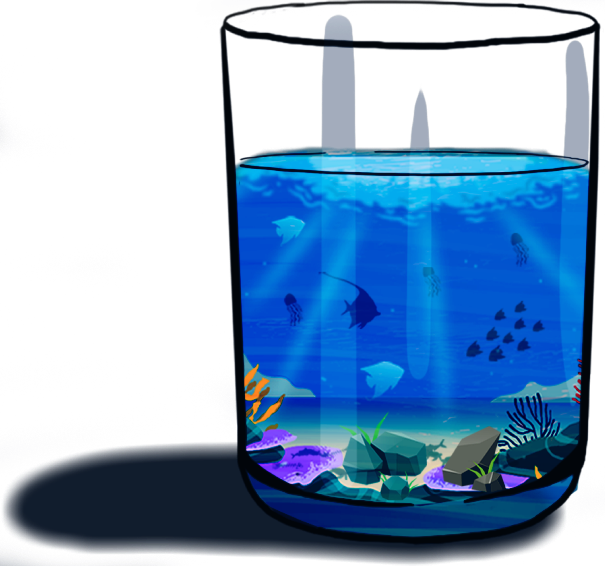Where that water came from?
And the environmental toll of that small gulp on marine life?

And the environmental toll of that small gulp on marine life?


According to a World Bank report published in March 2024, the average daily water consumption per capita in the six Gulf Cooperation Council (GCC) countries has exceeded 500 liters. To grasp the scale of this figure, compare it with Germany, a country with a similar income level, where the per capita daily water usage is around 120 liters.
This high water consumption in the GCC countries can be attributed to several factors, including steady population growth—which increased by over 10% between 2015 and 2022—urban expansion and rising tourism, as highlighted in the latest GCC Water Statistics Report (2022).
The global benchmark for “absolute water scarcity,” as defined by international organizations like the FAO and the World Bank, is 500 cubic meters of renewable freshwater per capita annually. In contrast, according to 2021 statistics, the GCC’s renewable freshwater resources provide only about 207 cubic meters per capita annually (equivalent to roughly 567 liters per day).
So, how do GCC countries address this 60% shortfall below the absolute water scarcity threshold? They have turned to seawater desalination, leveraging their access to open water bodies such as the Arabian Gulf, the Arabian Sea, and the Red Sea.
After decades of reliance on desalination and extensive investments in new plants, GCC countries now pride themselves on achieving water security. The average annual freshwater availability per capita—whether renewable or desalinated—has reached 1,524 liters per day, equivalent to approximately 557 cubic meters annually, exceeding the water scarcity benchmark by more than 10%.

Despite this achievement, many researchers and environmental experts argue over its environmental impact. They warn that the significant expansion in reliance on desalination plants increases the salinity of the Arabian Gulf. This is due to the discharge of brine—a byproduct of desalination—back into the Gulf’s waters, which affects marine life and the communities that depend on it.
The Middle East and North Africa region produces about 70% of the world’s brine, compared to approximately 4% from North America, 6% from Europe, and 10% from East Asia and the Pacific.
Although the Gulf is a semitropical sea, it experiences extreme environmental conditions. According to a study published in Nature, summer temperatures can reach 36°C (96.8°F), and salinity levels can rise to 42 parts per thousand in its shallow southern waters.
Another study, “The Perils of Building Big: Desalination Sustainability and Brine Regulation in the Arab Gulf Countries,” published in the journal Desalination, highlights that brine discharge at temperatures 30-40°C (86-104°F) higher than the incoming seawater has varying consequences for marine ecosystems.
This four-part investigation, a year in the making and supported by the Pulitzer Centre, delves into the history of desalination plants in the GCC, examining who benefits and who bears the costs. It explores the environmental impact of these plants on local communities heavily reliant on fishing and seeks potential solutions to this pressing crisis.